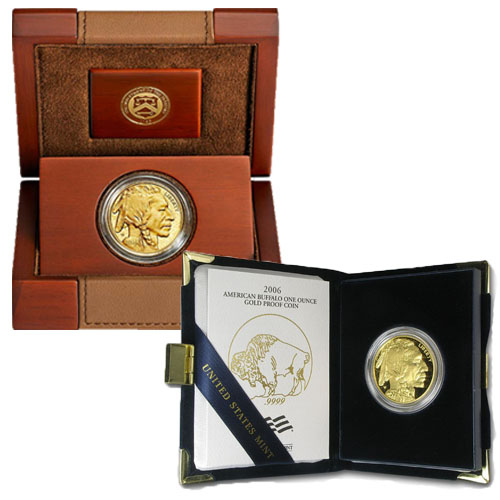Description
The United States Mint was founded in 1792 by the Coinage Act of 1792 and began issuing the first US gold coins in 1794. For the next 210 years, the United States Mint would not issue a gold coin with greater purity than 22-karat gold. In 2006, the American Gold Buffalo Coin changed all of that with a ground-breaking coin.
Coin Highlights:
- Consists of One Troy ounce of .9999 pure gold.
- Issued a face value of $50 (USD) by the United States.
- On the obverse is a Native American figure.
- The reverse depicts an American bison known as Black Diamond.
- “W” mint marks on the obverse.
American Gold Buffalo coins contain 1 Troy oz of .9999, or 24-karat, pure gold. When the Gold Buffalo was introduced in 2006 it became the purest gold coin ever issued by the United States Mint. The Proof American Gold Buffalo, like its bullion counterpart, is traditionally only available in the 1 oz weight.
The 2008 release of the Proof American Gold Buffalo Coin included a total of four weights with 1/2 oz, 1/4 oz, and 1/10 oz coins joining the 1 oz option. This was the only year in which these weights were available though. The highest mintage in the history of the Proof Gold Buffalo came in the debut 2006 issue with 246,267 coins struck. The lowest mintage figure to date was 16,591 coins in 2015.
On the obverse of all Proof American Gold Buffalo Coins is the image of a Native American tribal figure. This right-profile portrait was created in 1913 by James Earle Fraser for use on the Buffalo Nickel and was designed with the influence of facial features from three real-life native leaders of the early 20th century.
The reverse of 1 oz Proof American Gold Buffalo Coins features the image of an American bison. A critical animal to the culture of tribes from the American Plains, the buffalo is the largest land mammal in North America. This design is based upon Black Diamond, a resident bison at the Central Park Zoo in New York City in the early 20th century.















